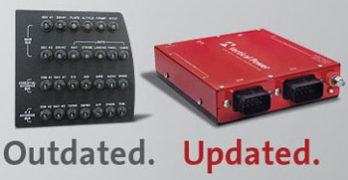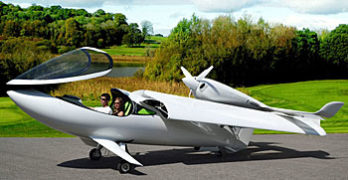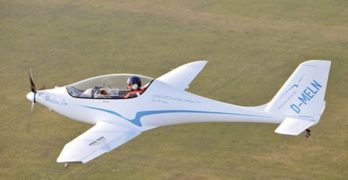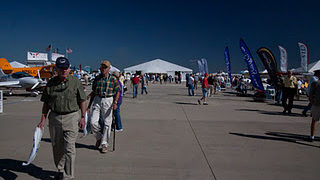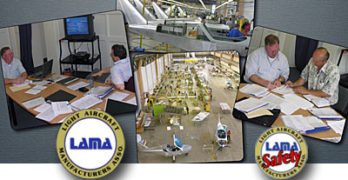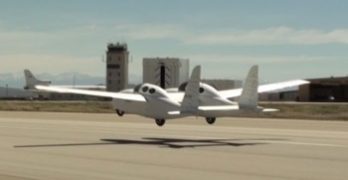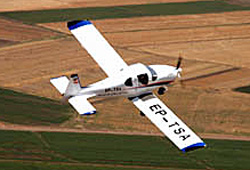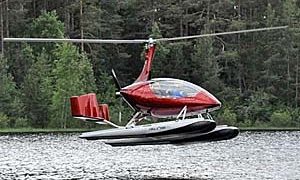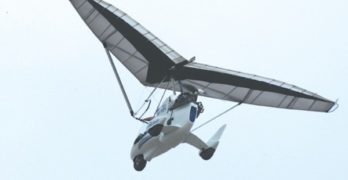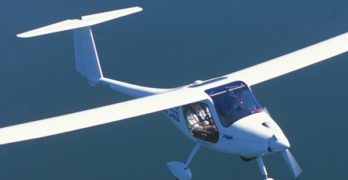Does the idea of electronic circuit breakers (ECB) make you yawn and look around for something more interesting? I understand, but this is truly a cool product. ECB developer Vertical Power also offers a related and extremely compelling product. After visiting with Marc Ausman at Sun ‘n Fun, again at AirVenture 2012, and then with several LSA builders, I got over the yawn reflex and realized Vertical Power is a most progressive company, one that deserves additional attention.
Update Note — This article has been updated after Vertical Power was acquired by Astronics and placed with a division named Ballard Technology. Please see note in red text below and click here to learn more about Vertical Power.
First, the VP-X. This shiny red box is the third generation of ECBs. The first two depended on their own screen to show their benefits. The VP-X model now works with five major suppliers of EFIS avionics including Dynon, Garmin, MGL, GRT, and Advanced.
Search Results for : CT AND hand control
Not finding exactly what you expected? Try our advanced search option.
Select a manufacturer to go straight to all our content about that manufacturer.
Select an aircraft model to go straight to all our content about that model.
Quick LSA Review of What’s Expected at Oshkosh
I have several targets on my radar for follow-up at the big show that starts July 23rd. Here’s a beforehand review; details will follow. ||||
*** LSA seaplanes will generate plenty of interest, I think, with Icon‘s latest announcements and the dreamy new Lisa Akoya (photo). Both are superslick but not to be outdone by the SeaRey, which already has nearly 600 flying. SeaRey builder Progressive Aerodyne is hard at work on SLSA status. Adding the SeaMax into the mix, LSA seaplane enthusiasts have lots of great choices… and then come the floats for other planes. Lotus is back and Zenith is a trusted supplier of many years. You’ll be able to see both sets of floats in the LSA Mall. While you’re in the LSA Mall, you can check out AMT’s air conditioning for LSA plus the Belgium D Motor.
Electric-Powered Light Aircraft
Flying with Juice
As an airplane approaches, a whirring sound accompanied by a
barely discernible whine and a mild propeller buzz exhibit a
Doppler effect as the plane passes overhead. What is that curious noise?
We are intimately attuned to internal combustion engine sounds –
some experts claim they can identify the brand and size of an engine
simply by listening to it run. We’re less aware of electric motor noises
because we quickly tune them out. Electric motors run everywhere in
our lives – in our refrigerators, our computers, in our ceiling fans, and
numerous other appliances. Most motors – it’s incorrect to call them an
“engine” – are exceptionally quiet, and that’s a good thing.
One wonders if relatively quiet electric motors on aircraft will invade
our piston-powered world, especially given noise sensitivity at many airports.
Some say, “We’re about to see if electric works.” I say, “We’re seeing
it right now!”
Two years ago, I wrote about ultralights – literally Part 103-compliant
ultralights – operating remarkably well on electric power.1 In the ensuing
months, more projects have been announced.
Sebring EXPO: 2.5 Perfect Days
Sebring is alive and well and gliding along better than ever. That’s more than I can say for the wireless where I’ve tried to post since Thursday night, so today, you get two point five posts for the price of one. *** First bit of news: Opening day Thursday was the best attended in the show’s eight year history (not five years as I doofishly reported the other day). Aiding and abetting: beautiful, absolutely beautiful weather. No hurricanes, no clouds of leaflets from Republican Presidential hopefuls, just a lavishly enjoyable (for us snowbirds at least) 70 degrees, with a steady 10 knot wind a good part of the day, followed by a crisp, clear night. Thank the Maker. *** Your humble blogster took full advantage of opening day by spending almost half of it shooting and flying the new BRM Bristell S-LSA (yes, it’s ASTMified). A very, very sweet ship.
Politics and LSA… 1st in a Series: Certification
In a series of posts from time to time, I will explore the relationship between government(s) and aviation. I plan to take a global view but the essence is this: Since the beginning of aviation (or at least since near the beginning) government has approved any aircraft the public may buy and fly. A newly designed model, after proving its airworthiness to company engineers and management, had to gain government approval before sales could begin. *** The cost curve has been steeply upward. Cirrus Design is a company whose emergence I watched very closely when I worked for BRS parachutes some years ago. We were deeply involved with Cirrus in the certification of a parachute system for the SR20. My front-row seat gave an intimate look into the approval process. Cirrus reported a cost of many tens of millions of dollars to get a Part 23 Type and Production Certificate. *** Then came LSA.
Another Roadable Aircraft Project!
Okay, so no way this is ever going to be a Light Sport aircraft, but this is just too much fun and I had to pass it along. *** Famed aircraft designer Burt Rutan has been at it again, this time with his eclectic take on a flying car that began life as an electric-powered flying testbed. *** Aviation Week’s online blog (also picked up by Wired magazine) shared information released exclusively to it by Rutan’s Scaled Composites company known in recent years for many fantastic projects including Spaceship One and White Knight. *** Called BiPod, the flying car became a crash program, completed in just four months and already in test flight mode. Rutan himself retired in April of this year. *** Model 367 BiPod is characteristically, wonderfully unconventional as have been all of Rutan’s many designs. *** The two-seat, hybrid-electric “roadable” aircraft (mini-rant: I sure hope that term doesn’t replace flying car, which flows off the tongue much more agreeably, don’t you think?), originally conceived as a fast, inexpensive electric aircraft, morphed into a flying car.
Over the Horizon LSA Producers: Iran and Malaysia
Most of what our media reports about Iran is bad: Islamic militants. Contested elections. Brutal suppression of dissent. Nuclear ambitions. What we don’t hear is about the country’s light aircraft producers. Then consider Malaysia. Do you think of that country relative to aircraft production? Do you think of it in any way? My guess is most Yankee aviators haven’t given either country much thought (except maybe in a negative context). *** Yet here is Free Bird. An article appearing on Iran’s PressTV began, “Iranian aviation researchers have designed and built an all-composite ultralight aircraft to meet the country’s training, border control, surveillance and recreational needs.” The researchers are evidently employees of manufacturer H. F. Dorna Company, which “was established in Tehran in 1988 as a private company specializing in design and manufacture of light-sport aircraft.” *** Managing director of H. F. Dorna, Yaghoub Entesari, was reported as saying, “[Free Bird’s] full composite structure conforms to ASTM technical standards and falls under the micro-light category under Iranian law.” Free Bird is said to fly more than 500 miles with a maximum airspeed in level flight of more than 150 mph (which is beyond FAA’s LSA rules).
Aero 2011: Sleek and Different Gyroplanes
Rotary wing aircraft have not been my focus. But I could hardly miss a flock of streamlined gyroplanes at Aero 2011 and I wondered why we don’t have these in the USA? To get an answer I went to Powered Sport Flying publisher and Internet radio producer, Roy Beisswenger, who covers the gyro scene in America… *** Roy explained, “While gyroplanes seem to be languishing in the USA, they are becoming a thriving part of the sport aviation market in Europe. The main reason focuses on the regulatory path in many European countries, which gyroplane manufacturers can follow to produce ready-to-fly ships. In contrast, the FAA specifically does not currently allow gyroplanes to be certified as Special LSA. Instead, U.S. manufacturers are required to offer either Part 27 aircraft (the rotorcraft equivalent of Part 23) or Experimental Amateur Built (EAB) kits. This has hampered the introduction of several fine designs from overseas because European manufacturers are forced to produce only partially-built gyros for the U.S.
All-American Revo Sets New Standard
Behold the Revo, a new benchmark in weight-shift trike design.
Look carefully and you’ll see the Revo is not like any weightshift
light-sport aircraft you’ve seen before. The Revo had to
surpass impressive work by larger, more established companies to leap
to the forefront. Any way you look at it, the Revo is simply extraordinary.
I’ve been lucky to fly many trikes over the years. Every few years, one
of the leading producers would make a remarkable step forward in the
design of these flying machines with changes that tended to be evolutionary,
not revolutionary. Among them, I cannot recall a clean sheet of
both carriage and wing debuted as a single aircraft.
Welcome to Revo from Evolution Trikes, an all-new, blazingly fast
American trike like none before it.
The more I examined the Revo and then flew with Larry Mednick of
Evolution (and Tampabay Aerosports), I realized even Air Création’s
beautiful Tanarg trike had been done one better.
Sleek, Comfortable and Fun; The Sinus Motorglider
Many Americans will agree
the name of this aircraft is odd, and that may be a kind word for the common reaction to “Sinus.” Is the name that important? Sinus (pronounced Seen-us), the aircraft, is a sleek, slender machine capable of impressive performance.
Any soaring-attuned pilot can easily live with the name Sinus for the 49-foot span and, get this, 28-to-1 glide performance! On first glance, except for its elegant, shapely, and thin wings, the Sinus looks like a proper light sport airplane. Pilot Matevz Lenarcic flew one around the world solo, in 80 days, and with zero ground or air support (see “Microlight Motorglider Flies Around the World,” April ’05 UltralightFlying! magazine).
What’s In a Name After All?
Let’s consider that name. U.S. dealer Robert Mudd says Pipistrel – the manufacturer – prefers to pronounce it “seen-us,” not “sighn-us.” They say this refers to a perfect sound wave or sine wave rather than a head cold.
- « Previous Page
- 1
- …
- 7
- 8
- 9
- 10
- 11
- …
- 62
- Next Page »


